Circle Ranch Indian Cave

At Circle Ranch we have what may be the most important unexplored cave dwelling in far-West Texas: A large cave which occurs in one of our limestone escarpments. It is about 200-feet above the desert floor and 100 feet below the escarpment top. The cave measures roughly 80’ by 80’. Inside, it has a regular opening and a flat floor. It is head high even though the floor is 9’ deep in detritus, some of which is more than 10,000-years old.
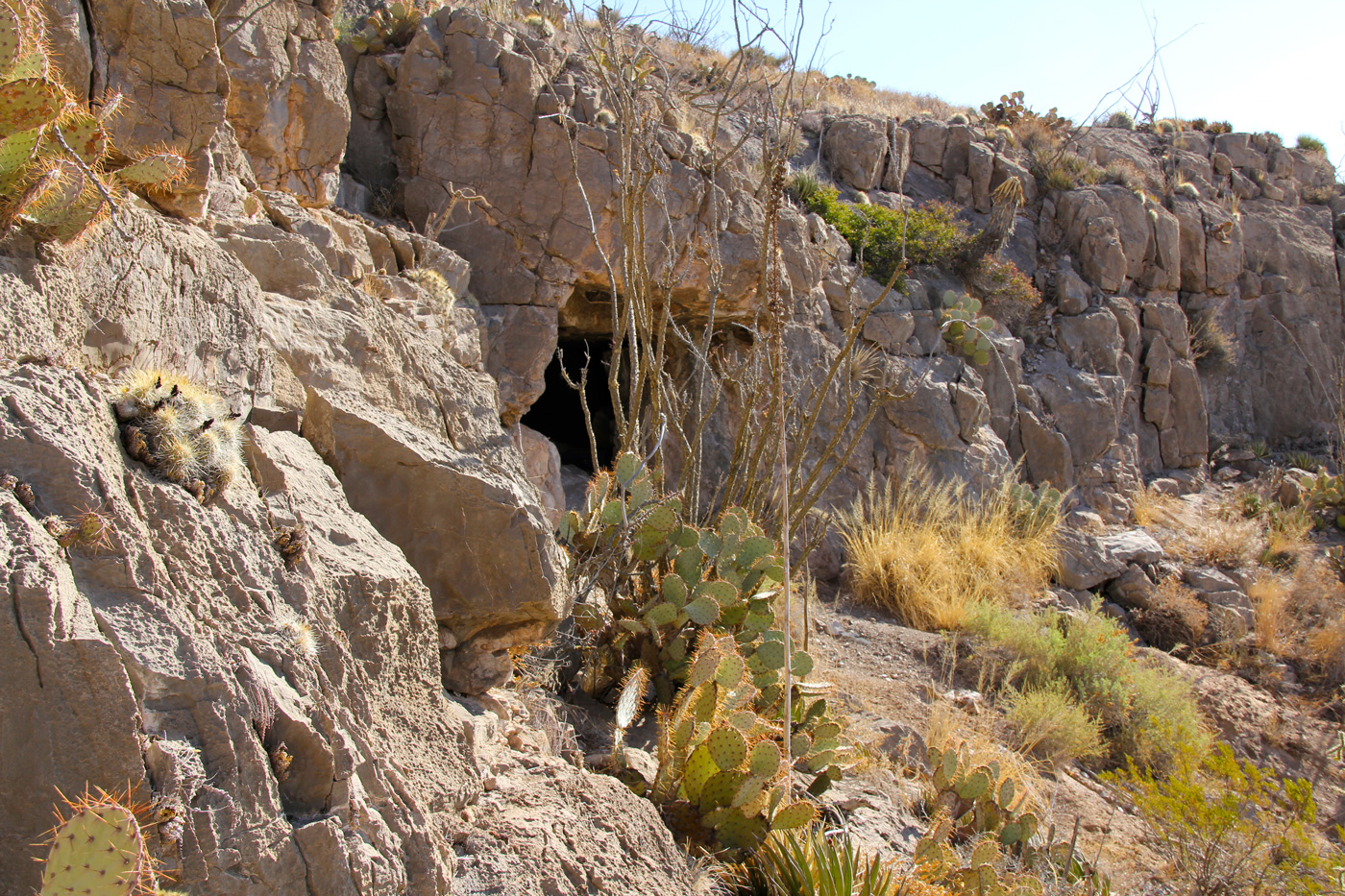
This is the first properly organized archeological dig of this cave. Excavations will take several decades. We have found the bones of several amazing Pleistocene animals: the American lion which was 30% larger than an African lion: Pleistocene buzzards, horses and llamas. There are also extensive human remains: Fragments of sandals, baskets, arrowheads, and spear points. Even feces: these will provide important insights into what Indians ate and what food plants grew and when. The Circle excavation is ongoing. We will post photographs of what we find.
The dig is being led by a group from the University of Texas at El Paso. Javier Vasquez has written a thesis on the subject of the preliminary findings. That appears below.
Circle Cave
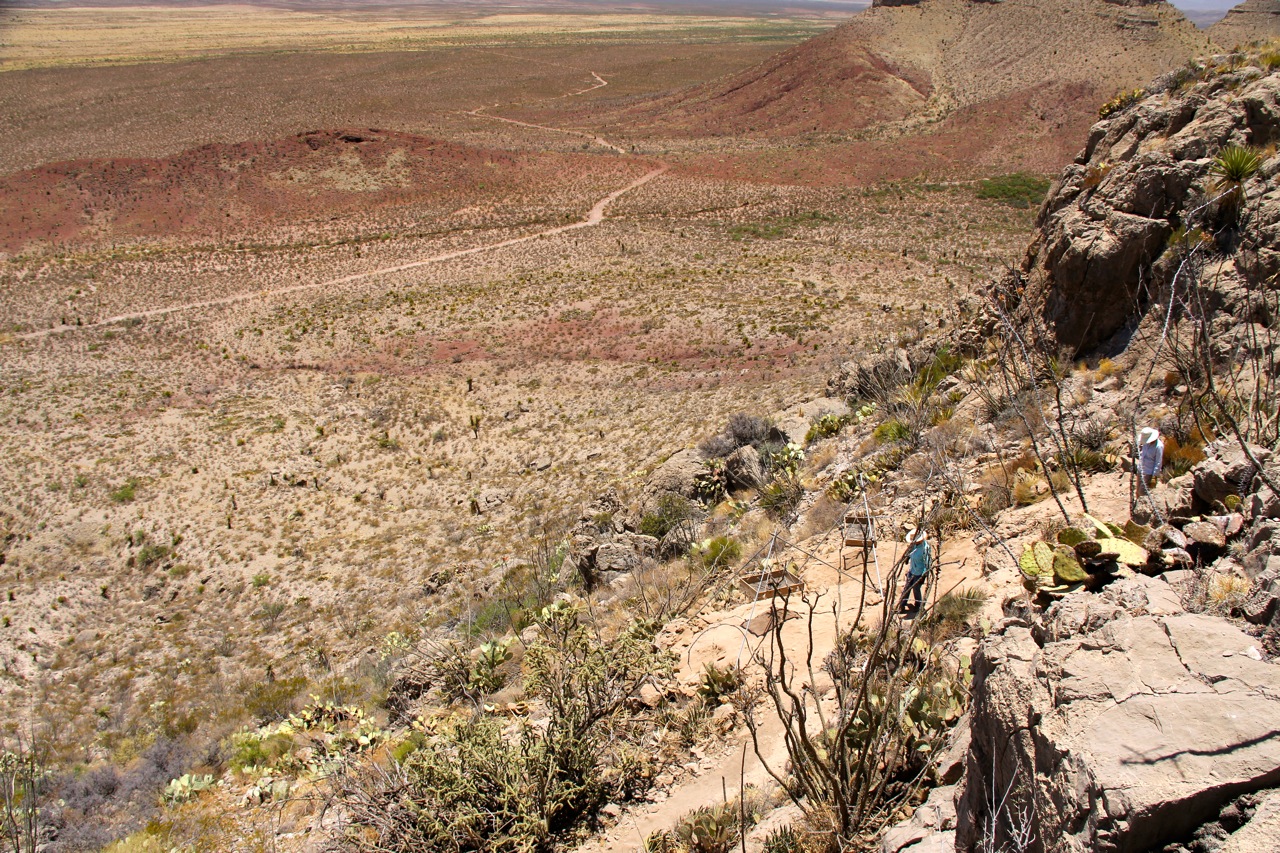
In this picture Laura and Sarah have climbed down the cliff face to the mouth of the Indian Cave. They are passing by two suspended baskets which are being used to sift excavation material and separate artifacts from dust. Far below them is the desert floor. We are looking off to the southwest.
Entrance to Circle Ranch Indian Cave
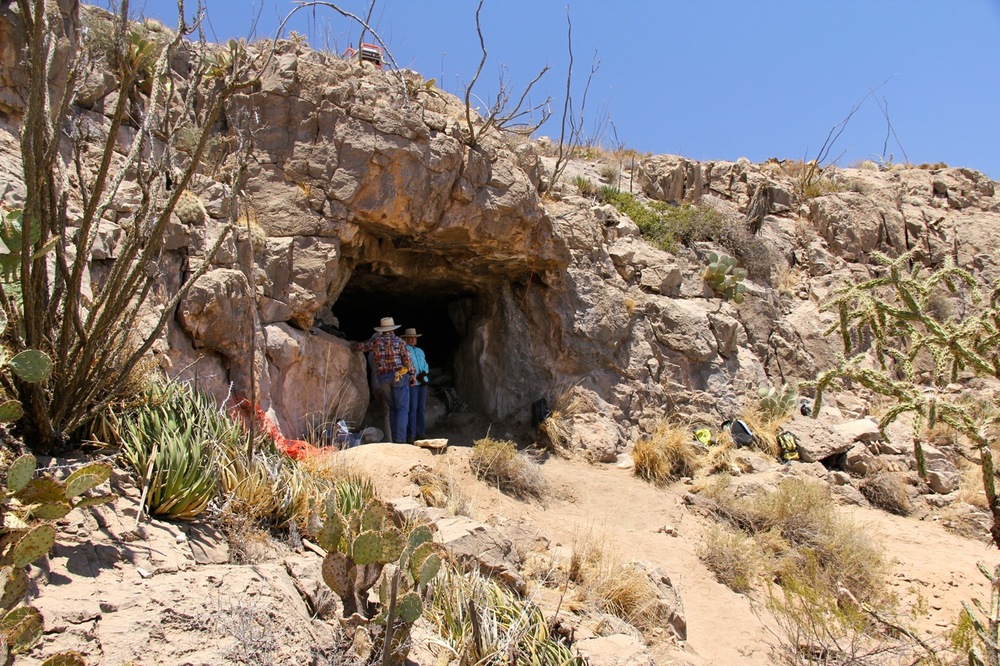
The Circle cave is 80’ by 80’ square. There is standing room notwithstanding 10’ of detritus on the floor. Here Bill and Laura are standing in the entrance. The generator above them is powering the lights for the work that is going on inside.
Cave Excavations
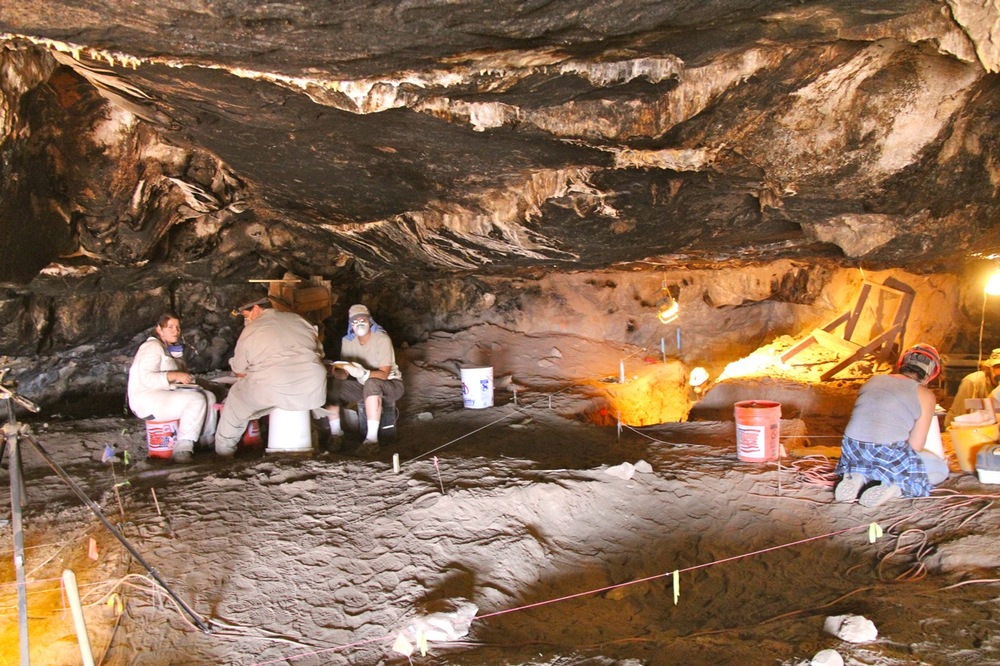
UTEP archeologists are excavating a shaft. This shaft is about 3’ deep and has yielded many interesting artifacts which are pictured below.
Circle Ranch Archeologists
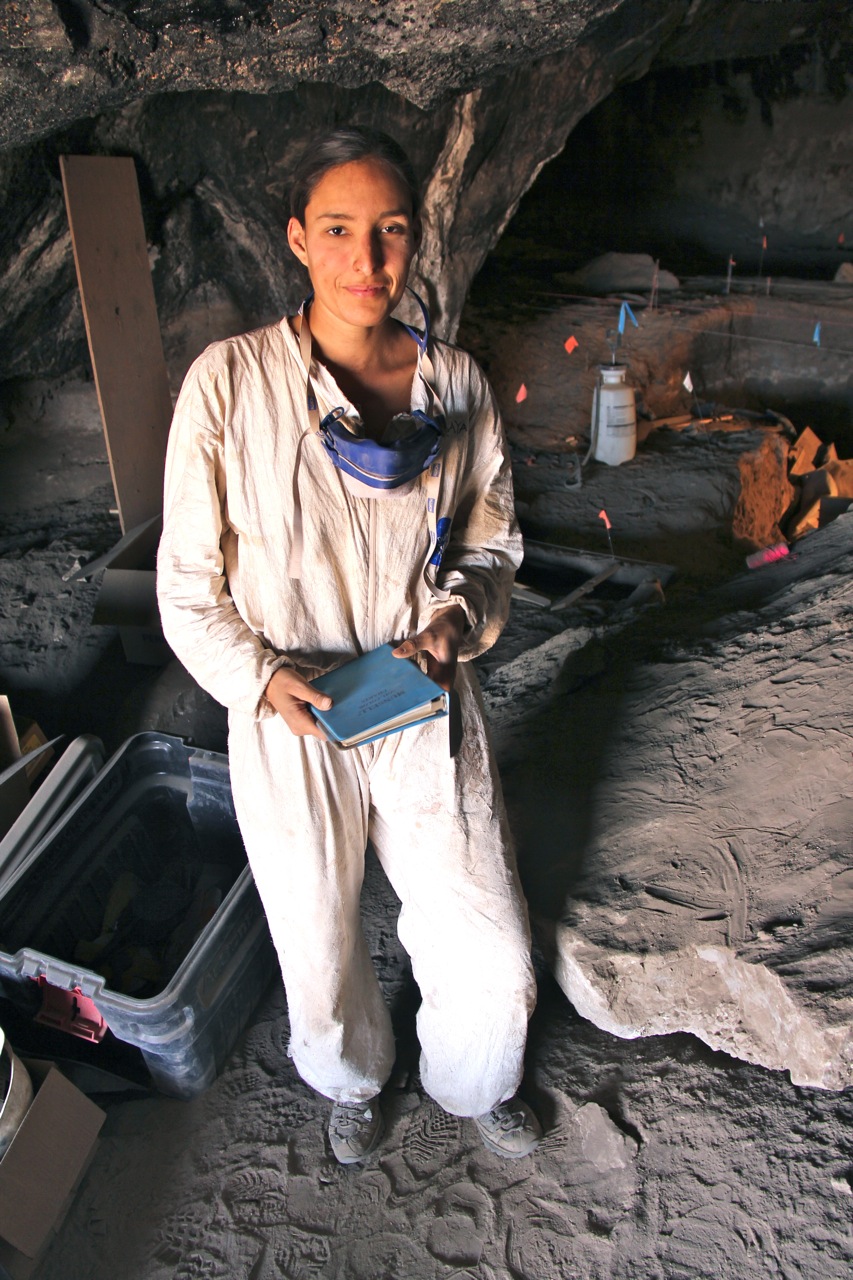
Rachel Romero is a 24-year old archeologist from the University of Texas at El Paso. Rachel worked one month in the Circle Ranch excavation this summer. She is studying for a biology degree. She typifies the outstanding group working on this project.
Excavation shafts at Circle Ranch Cave
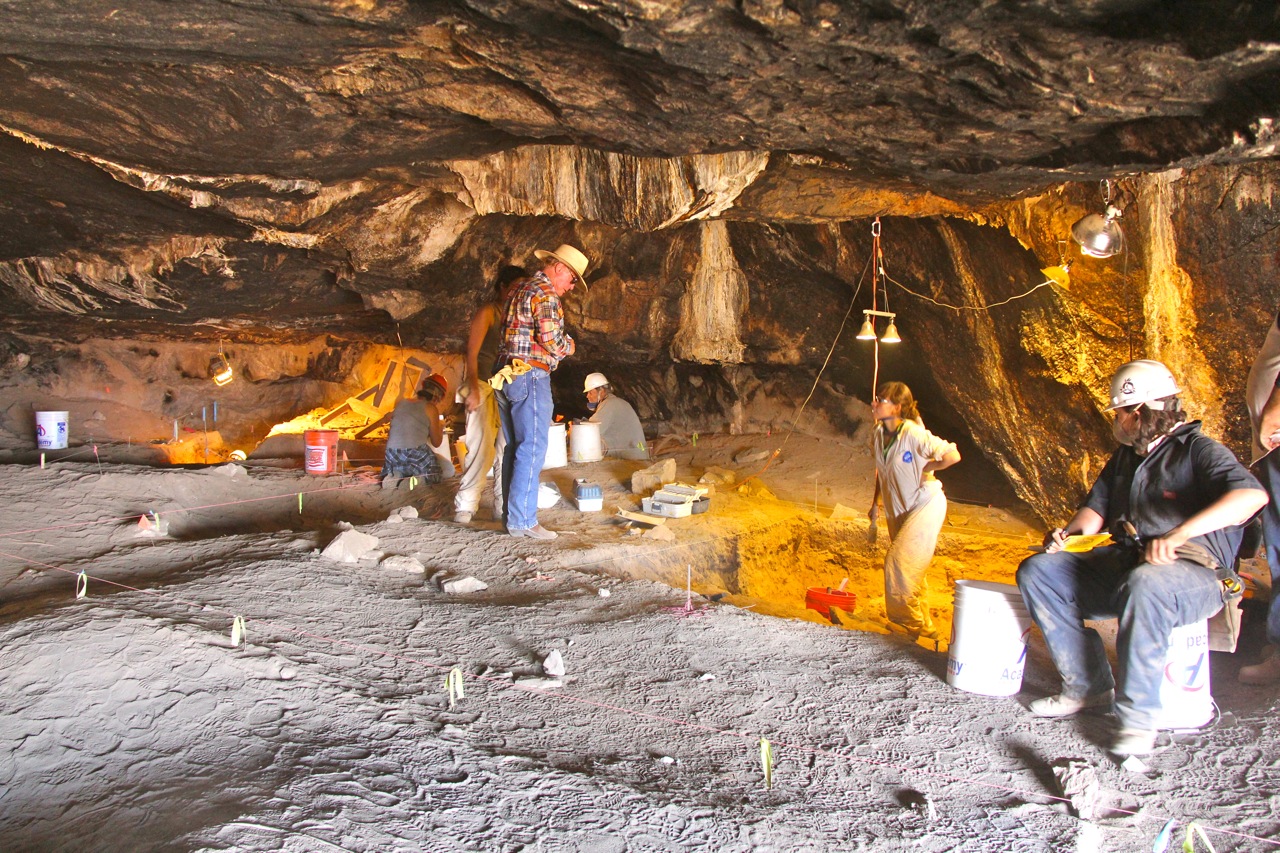
This particular shaft has gone down 1-½ feet and struck ledge stone which fell from the ceiling long ago. Who knows what we will find below that ledge stone, and how old it may be.
Bill and Carla
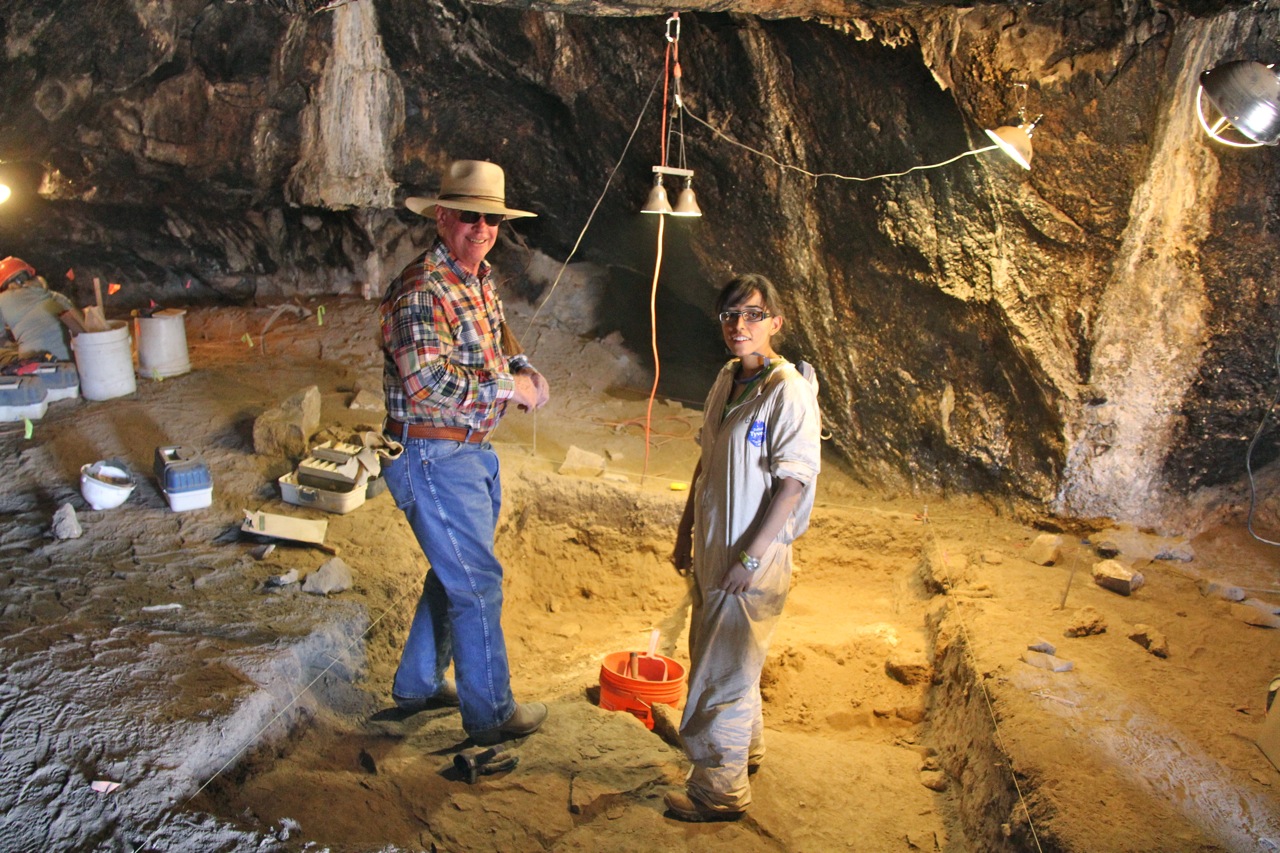
Bill Magee is an old schoolmate of mine. Carla V. Sámanois an archeologist major at UTEP. Here they have excavated a shaft down to the level of fallen roof ledges. Future excavations will remove those rocks and proceed to the cave floor.
Tunnel to Adjacent Cave
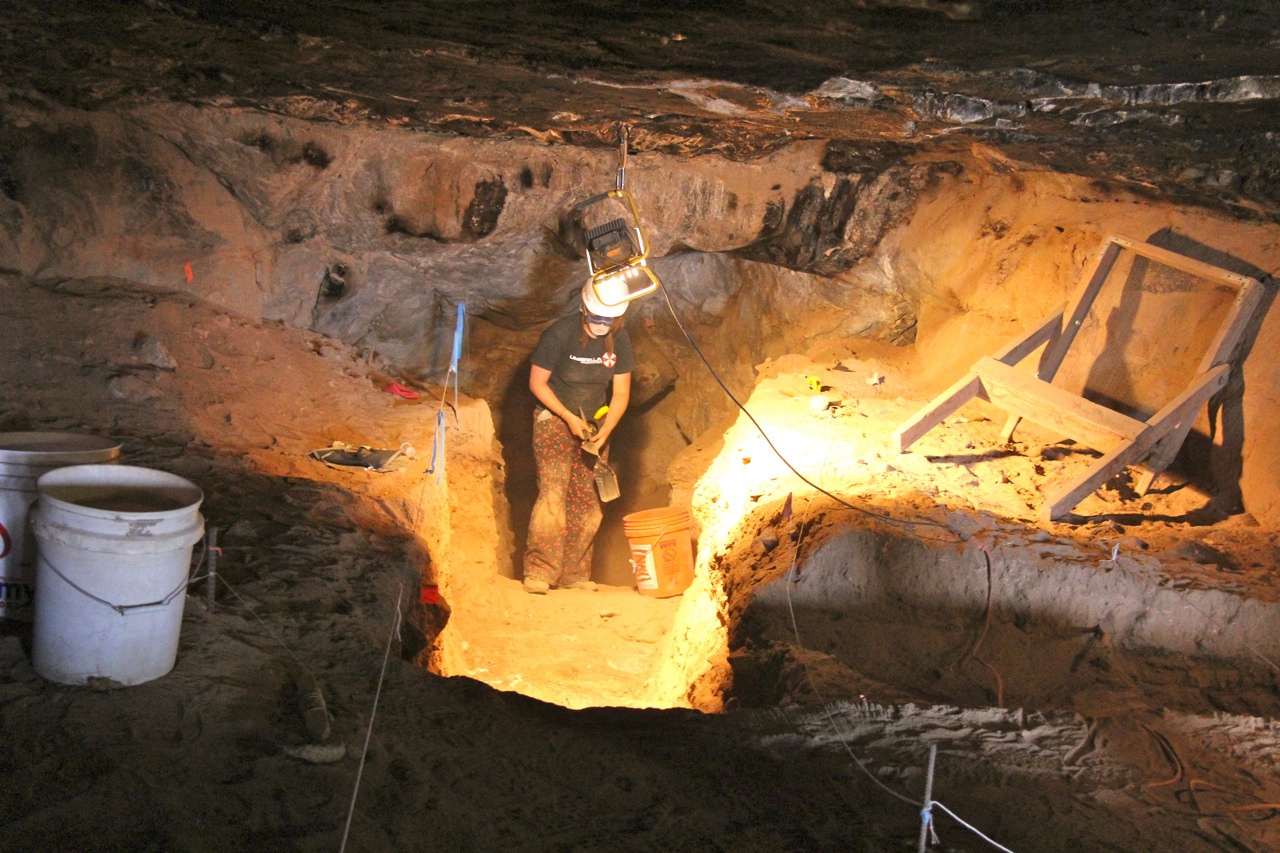
There are two large caves which are a few hundred feet apart in the escarpment wall. As we excavated in this corner we have discovered a tunnel which may connect through the stone to the adjacent cave. This is an intriguing aspect of the project.
Cave Mouth
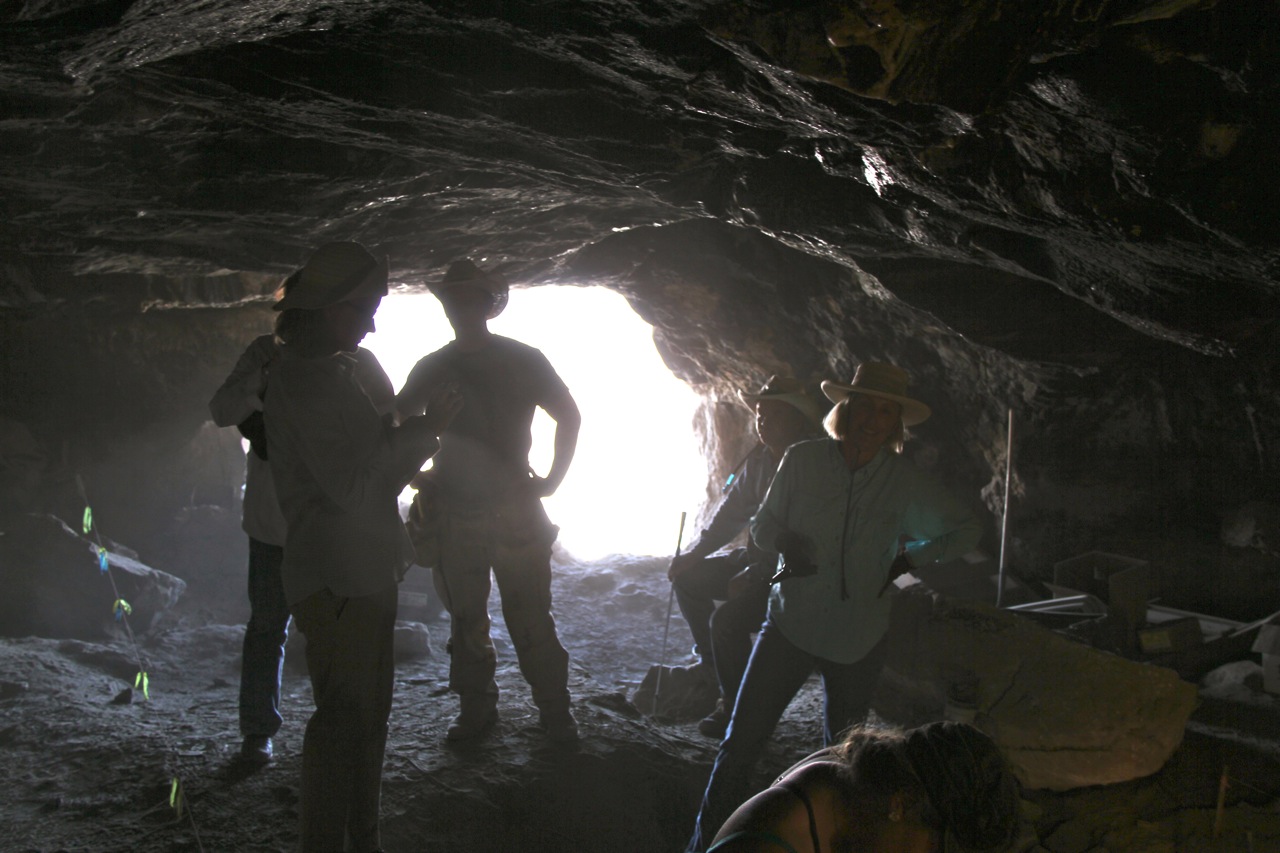
The mouth of this cave looks like it could have been shaped as a door. The interior temperature of the cave is cool in the summer and warm in winter, a dry, constant temperature which is to be expected, surrounded as it is by hundreds of feet of stone. This creates a perfect environment to preserve artifacts.
Sandal Fragments
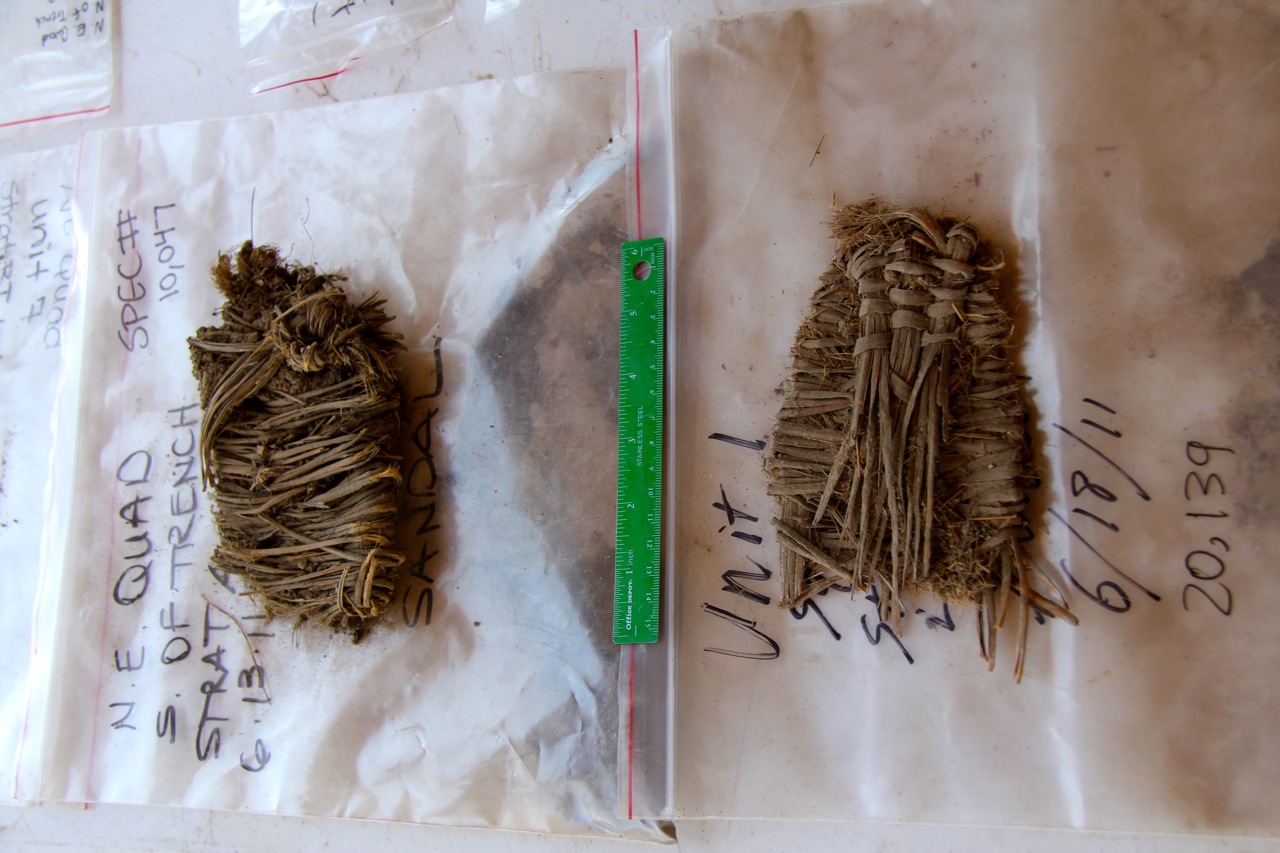
Typical of the many human artifacts we are finding.
Ancient Basket Fragment
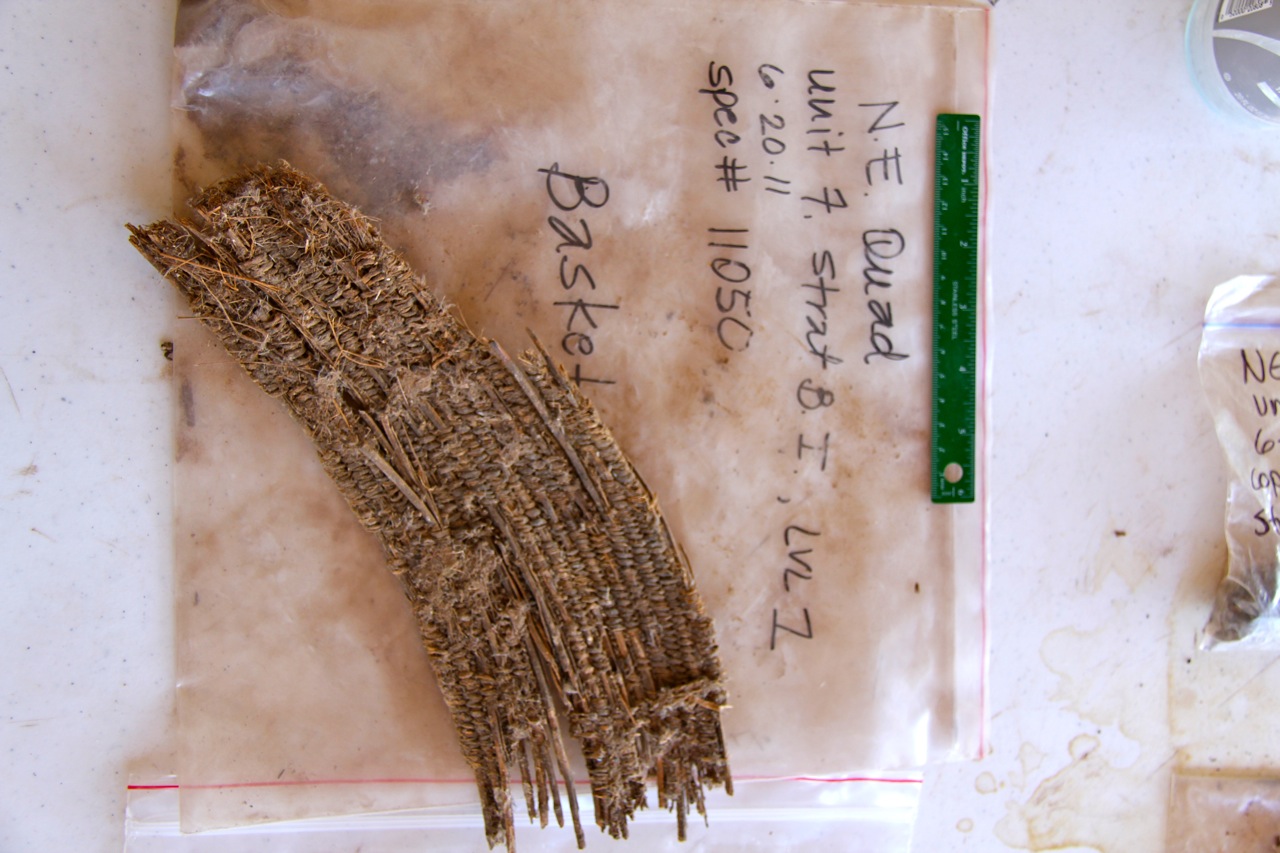
This fragment was discovered on June 20, 2011 and probably is 5,000 years old, or older. It will be carbon dated.
Horse Molar
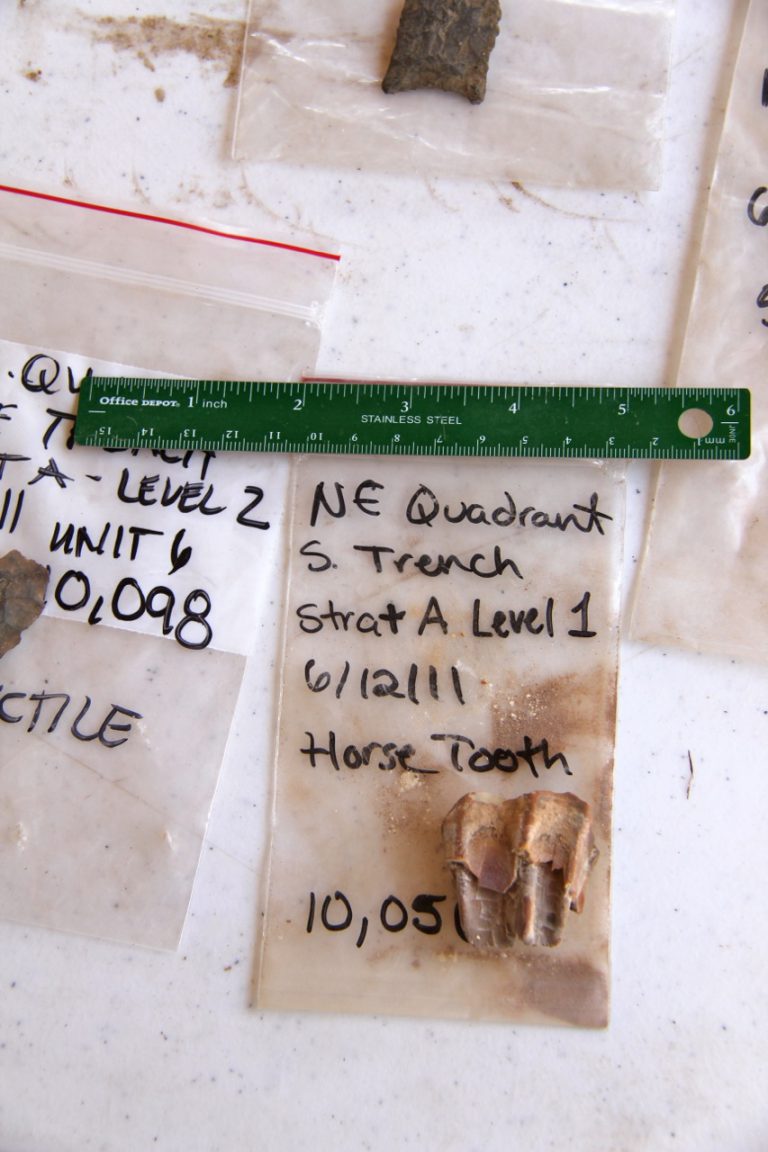
Most people do not realize that although there were no horses in North America when Columbus arrived in 1492, Equids (horses) evolved on this continent and that horses and their ancestors had been in our deserts for 50-million years prior to their extirpation contemporaneously with the arrival of humans. When sea levels fell in one of the many ice ages during the Pleistocene epoch, horses made their way to Europe and Africa over the land bridge from America. Those who think that horses are exotics are mistaken: Horses would still have been on this continent in 1492 if humans had not arrived and wiped them out 10-or-12 thousand years earlier. This scientific fact goes unheeded by those who confidently seek to wipe out wild horses and burros in our National Parks. Equids are not the exotics at Big Bend: Humans are the exotics, including the Park managers who have decided these animals do not belong in our deserts.
Human Feces
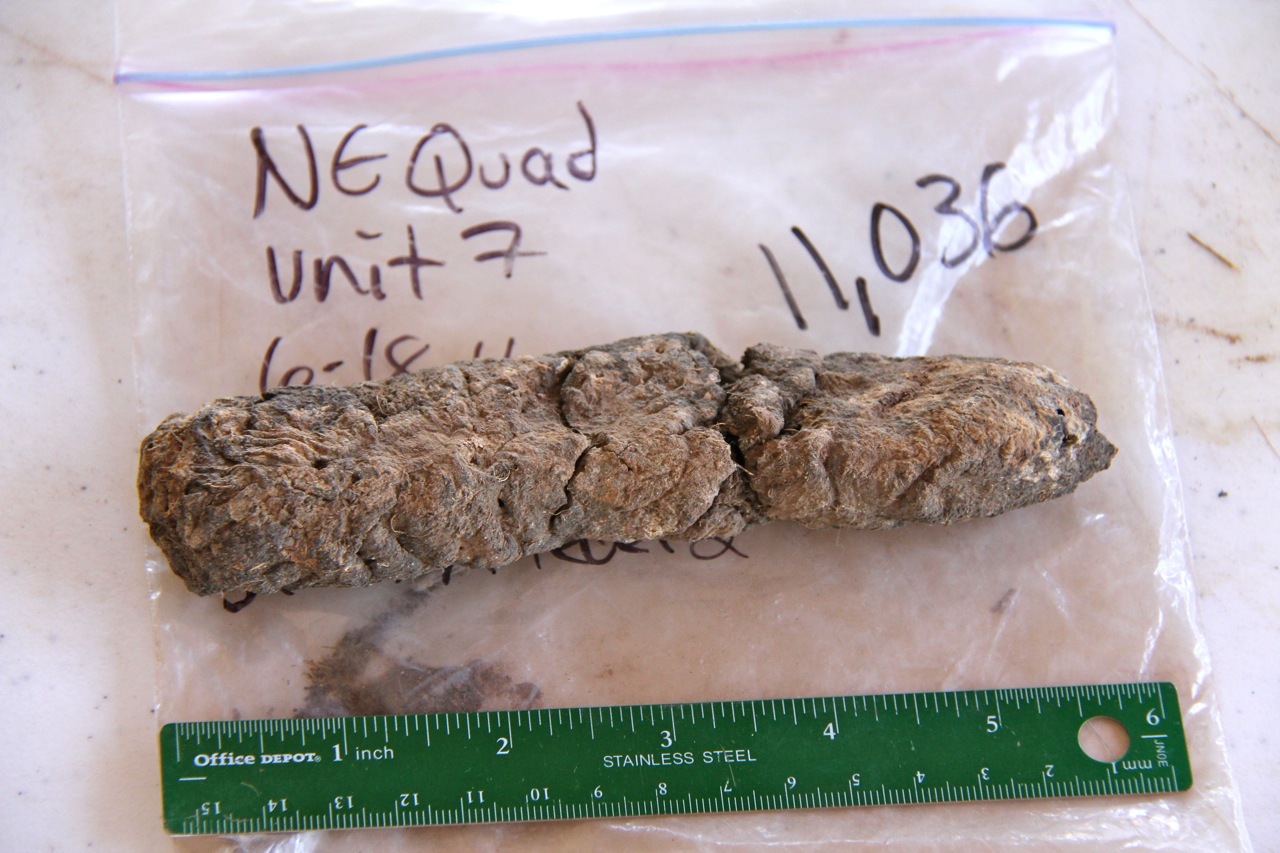
Disproving characterizations about myself, this is probably the oldest turd in West Texas: it will be rehydrated and microscopically analyzed and radiocarbon dated to determine what these folks were eating, and when.
Complete Report on Circle Ranch Indian Cave
